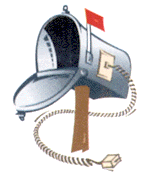 |
This enormous batch of letters has to do with Scott Kalitta’s crash and NHRA’s changing the racing distance for the Top Fuel and Funny Car classes. We’re taking the easy way out and not putting headlines on each individual letters.
I agree, any move is a move in the right direction. I do not think that 1000 foot race tracks will reduce cost, which I think is the real culprit. I think you will see them run just as hard for 1000 feet as they did at 1320, and destroy and more parts than ever. We must reduce costs to save the fuel class, and I think there must be a way to do this and still use most of the current parts. I hope for the best, but I think we are in for some drastic changes. If we have just seven or eight cars per fuel class that can afford to race... what’s the point?
Robert Brown
Punta Gorda, Florida
1,000 feet is about where Scott’s car blew up and still ran out of room, so how could this change the outcome of that crash? Maybe some way to open chutes automatically with that kind of failure would help.
Don Becker
Bensalem, Pennsylvania
Burk, wouldn't it be neat to see a modern funny car without the dump truck bed on back that actually looked like a production car? Why not take it one more step and make the floppers look like the real car (or close like they did in 60s 70s most of the ‘80s? I for one would love it.
On the distance thing, I would rather see the 1/8. A 1,000 feet does not compute. Thanks and keep up the good fight.
Brad Wise
Blue Springs, Missouri
I tend to think of things in a common sense manner. And I think Scott Kalitta's crash requires that type of thinking. From the brief video that I saw, the chain of events was this:
1. Engine explosion around half track
2. Major fire
3. Parachute came out but not fully
4. Sand trap entered at near full speed
Each of these things needs to be addressed in common sense ways.
1. There have been many engine explosions, but an engine explosion on its own is not a problem in regards to safety. It's only a problem if it creates a fire. You probably can't eliminate engine explosions without going to low compression, low performance motors. So you need to control the fire.
2. Fires have seemed to become more numerous lately and they are a problem. If they get snuffed out by fire bottles and Safety Safari, they don't do much damage in regards to driver safety, but lately, they have not been snuffed out in time on a number of occasions. I'm sure the drivers/crew chiefs do not want fire bottles set off automatically, but it would seem to be a necessity at this point in time. There would be a tremendous amount of cleanup if fire bottles were to be activated automatically say, if the burst panel blew, but lives may be saved.
3. Occasionally parachutes do not open fully but it is rare. Certainly, there may be something that can be done in order to ensure that cars are slowed enough before the sand trap, whether it is done by catch nets, more/different parachutes, etc. and possibly by parachutes that open automatically rather by driver operation.
4. If you want the sand trap to be the complete answer for stopping a car at full speed, then no NHRA or IHRA racetrack would fill the bill. The train of thought on sand traps is that it is a last ditch effort to stop a car, not the only method to stop a car. Reasonable assumption is that the car should have slowed considerably by normal methods before it ever gets to the sand trap. But there is no doubt that at least some of the NHRA tracks could use some more run-out space and certainly no poles/posts anywhere inside the sand trap or run-out area.
I have every confidence that all affected parties are doing exactly what I suggest here and will address each of these problem areas in a methodical way and make some adjustments and additions to safety equipment that will get the finish line back to 1320 feet and make top fuel racing safe and exciting.
Dave Smithers
Sault Ste. Marie, Michigan
